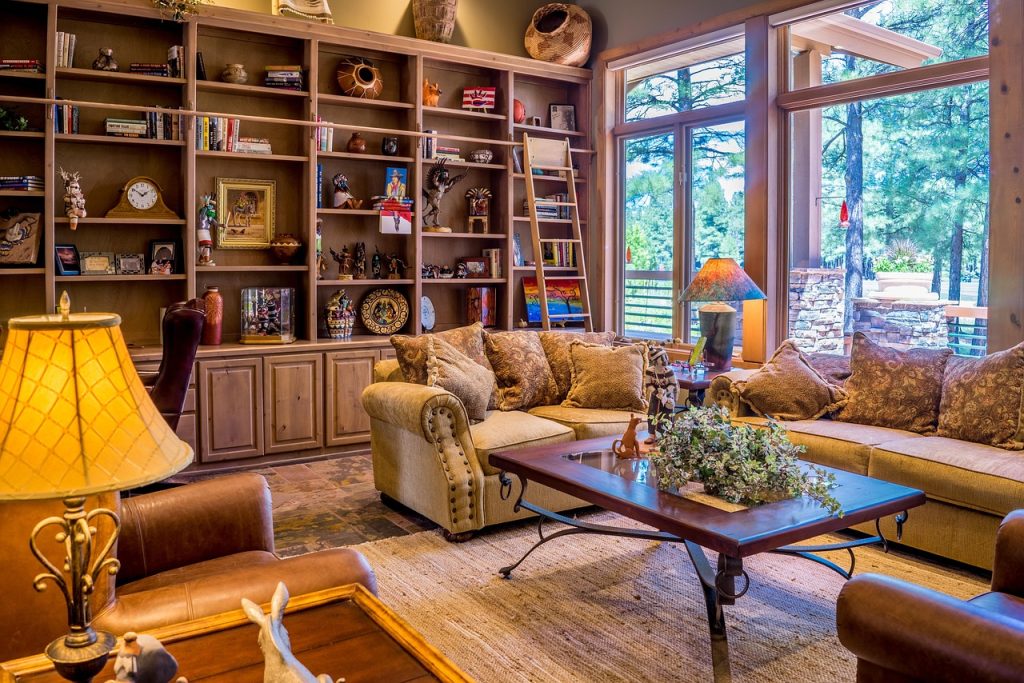If you’ve ever walked into a cozy café and immediately felt more relaxed, or noticed how your energy shifts in a brightly lit office, you’ve already experienced the powerful, often subconscious impact lighting has on mood and perception. Lighting isn’t just about visibility—it’s about how we feel in a space. The good news? With a few simple lighting hacks, you can dramatically change the ambiance of your home and support your mental well-being at the same time.
The Science Behind the Glow: Warm vs. Cool Lighting
To understand how lighting affects mood, it helps to know a little about color temperature. Measured in Kelvin (K), lighting color temperature ranges from warm (about 2700K) to cool (5000K and above). Warm lighting tends to have a golden, amber hue, while cool lighting is closer to daylight or the bluish-white of a cloudy sky.
Warm lighting (2700K–3000K) mimics the glow of sunrise and sunset. It’s calming and cozy, ideal for winding down. Think table lamps, candles, or the soft overhead lights in a reading nook.
Cool lighting (4000K–6500K) is more stimulating, mimicking natural daylight. It can increase alertness, focus, and energy—making it perfect for workspaces, kitchens, or bathrooms where precision matters.
The key is knowing when and where to use each type. Mismatched lighting can lead to restless evenings or groggy mornings. Thoughtful lighting, on the other hand, can support your natural rhythms and make your home feel like a sanctuary.
Hack #1: Layer Your Lighting Like a Pro
One overhead light source? Not enough. In fact, relying solely on ceiling fixtures creates harsh shadows and a flat, uninspired look. The secret is layered lighting—a blend of ambient, task, and accent lights.
- Ambient lighting is your main light source—think ceiling lights or large pendants.
- Task lighting is focused and functional—desk lamps, under-cabinet lights, reading lights.
- Accent lighting adds depth and emotion—LED strips, picture lights, candles, or even fairy lights.
By layering different types of lighting, you can shape how a room feels throughout the day. Brighten things up during busy moments, then dial it back to relax. It’s like mood music, but with light.
Hack #2: Dimmers = Instant Atmosphere Control
Installing dimmer switches might be the single most effective way to transform your lighting game. With a simple turn of a knob or swipe on a smart switch, you control intensity to match your vibe.
Dimming lights in the evening can help signal your brain that it’s time to wind down, promoting melatonin production and improving sleep. In the morning, gradually brightening your space helps wake you gently. No harsh transitions are required.
And if you don’t want to rewire your home, plug-in dimmer adapters or smart bulbs with app control are game-changers. You can set schedules or control brightness with your voice or phone.
Hack #3: Use Smart Bulbs to Match Your Circadian Rhythm
We’re wired to follow the sun, but modern life pulls us in other directions. Enter smart lighting, a practical way to mimic natural daylight indoors. Many smart bulbs now offer the ability to shift color temperature throughout the day.
- Morning: Start with cooler, blue-toned light to boost alertness and energy.
- Afternoon: Maintain bright, neutral light to stay productive.
- Evening: Shift to warmer tones to help your body relax and prepare for sleep.
This simple hack supports your body’s natural rhythm and can improve sleep, energy, and overall mood. Brands like Philips Hue, LIFX, and Wyze offer bulbs that make this effortless.
Hack #4: Let There Be (Natural) Light
Artificial light has its place, but don’t underestimate the power of natural light. Exposure to daylight is proven to elevate mood, regulate sleep, and even improve focus. So if your space allows, make the most of it.
- Sheer curtains soften but don’t block sunlight, perfect for privacy without darkness.
- Mirrors placed opposite windows can reflect light and make a space feel bigger and brighter.
- Clean your windows. Sounds obvious, but dirty panes can dramatically cut the amount of light coming in.
Even if you don’t have great natural light, using warm-toned bulbs with a high Color Rendering Index (CRI) can simulate daylight more convincingly than standard LEDs.
Hack #5: Choose the Right Bulbs for the Right Rooms
Every room has its purpose and should have lighting to match.
- Living Room: Mix ambient and accent lighting. Think floor lamps, sconces, and dimmable overheads.
- Bedroom: Go for soft, warm light sources on either side of the bed. Avoid bright overheads at night.
- Kitchen: Use cool, bright task lighting over prep areas, under cabinets, and around the sink.
- Bathroom: Crisp, cool lighting is great for grooming, but add warmer lights near the mirror for a flattering tone.
- Home Office: Natural or cool white light keeps you alert and focused. Desk lamps with adjustable heads are perfect here.
Matching light to function makes each space more enjoyable and practical.
Hack #6: Don’t Underestimate the Power of Accent Lighting
Want to instantly add warmth or drama to a space? Use accent lighting.
- LED strips behind a headboard, under shelves, or around the perimeter of a room can create a halo effect that feels modern and relaxing.
- Picture lights above artwork draw the eye and add an upscale feel.
- Candlelight (real or battery-powered) provides the softest, most natural-looking warm light for intimate settings.
These small touches turn generic rooms into experiences.
Hack #7: Color Bulbs: Not Just for Parties
Color-changing bulbs aren’t just a gimmick. Used tastefully, they can transform your space and affect how you feel.
- Soft blues and greens promote calm and focus, great for meditation or unwinding.
- Warmer reds and ambers help wind down your nervous system, ideal before bed.
- Even seasonal changes, like a cozy amber glow in winter, can lift your spirits.
Just avoid overdoing it. Subtlety is key. Save the rainbow strobe for the weekend dance party.
Lighting is one of the most overlooked elements in home design—but it’s also one of the most powerful. The right lighting doesn’t just make your space look better—it makes you feel better. By being intentional with color temperature, layering, and smart technology, you can create an environment that energizes, soothes, or inspires, depending on the moment.
So go ahead and dim the lights, switch up that bulb, or add a few LED strips. Your space (and your mood) will thank you.






